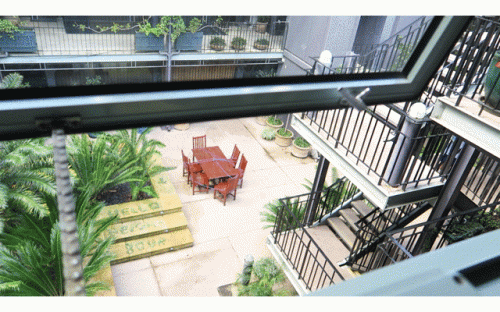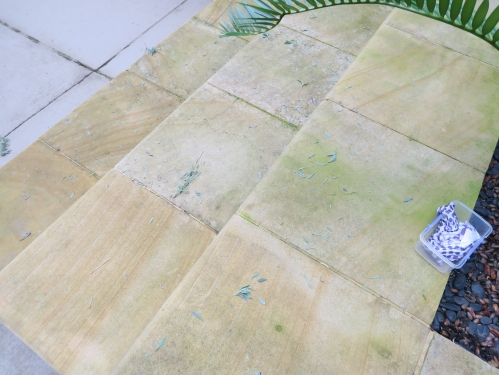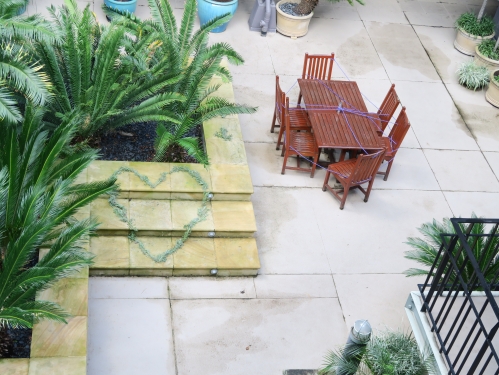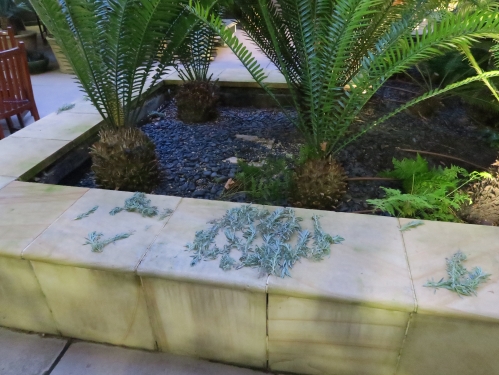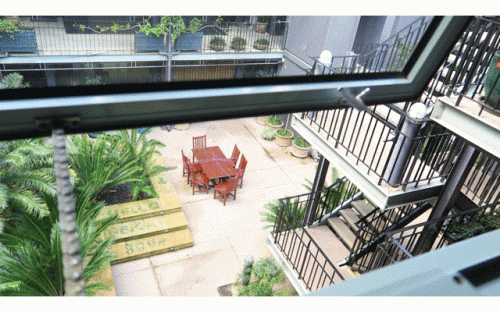
Theme: Play and Objects
Context:
My apartment has a communal courtyard area that was rarely used as a meeting place for residents, even before coronavirus restrictions began. The covid-19 pandemic has meant even the communal bbq table is tied up with rope, a warning of danger to all who pass. Our long list of community rules includes specifying allowable behaviour in communal areas, dogs must be carried (!), as well as a short list of allowable items on individual balconies. We see extra signs enforcing allowable behaviour that pop up after the occasional party in the communal area and our balconies are regularly policed for errant laundry left out to dry or illicit bbq equipment.
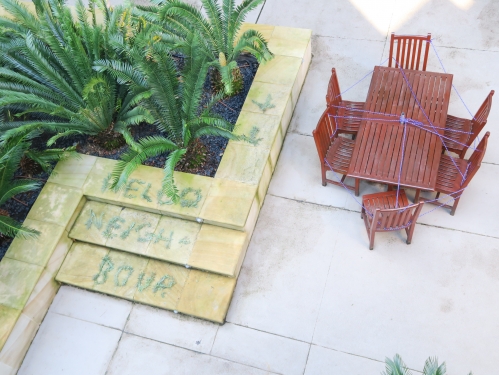
The week's play with lavender loose parts was an act of revolution, an act of liberating our communal courtyard (Flanagan, 2008) from the owners corporation committee control that values a pristine, empty aesthetic over the messy reality of communal living in an apartment complex. What do we want? Play! When do we want it? During socially reasonable daytime hours!
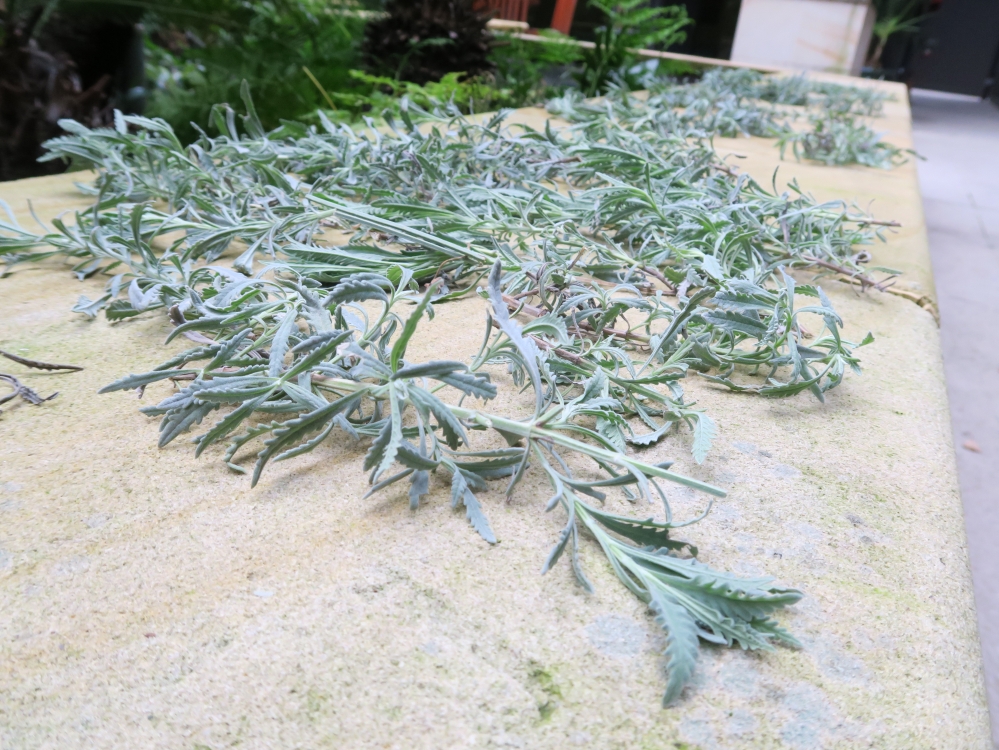
Method:
The concept for this playful revolution started with lavender branches snipped into smaller segments. The scent of lavender is calming, and acted as a symbolic, scented spreading of calm from my overgrown balcony garden into our apartment building community. The use of these natural elements is an echo of childhood days spent playing wtih sticks and leaves (Ward, 2018).
My play session started cautiously, I arranged the lavender branches to form the words 'Hello Neighbour' in the steps away from the main thorughfare, just below my study window. This first wordy iteration prompted a friendly chat with one neighbour about what I was doing, her broken english and my confusing explanation felt like a joyful act of connection and possibly confusion. My face mask that is required in Melbourne right now, muffling my words but keeping us both safe. This play session was a public display of my identity as a member of our community as well as possibly status as a newer member of this community who has not been part of making our community rules (Sutton-Smith, 1997).
Stepping back into my study and viewing the work from a distance revealed the limitations of letters to convey meaning.
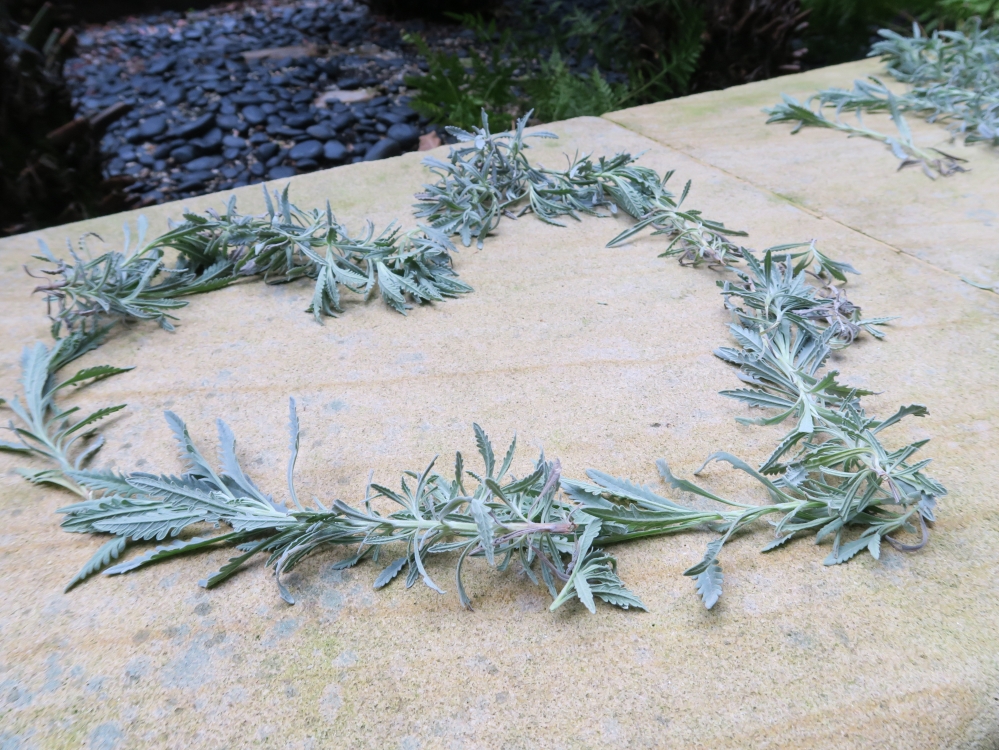
The next iteration felt less daunting, I had staked my claim to the space in our communal area, now it felt more like play. This time I formed a heart: a simple, easily recognisable symbol of love and connection. I waited. And waited. No-one felt inspired to engage in play with these lavender loose parts.
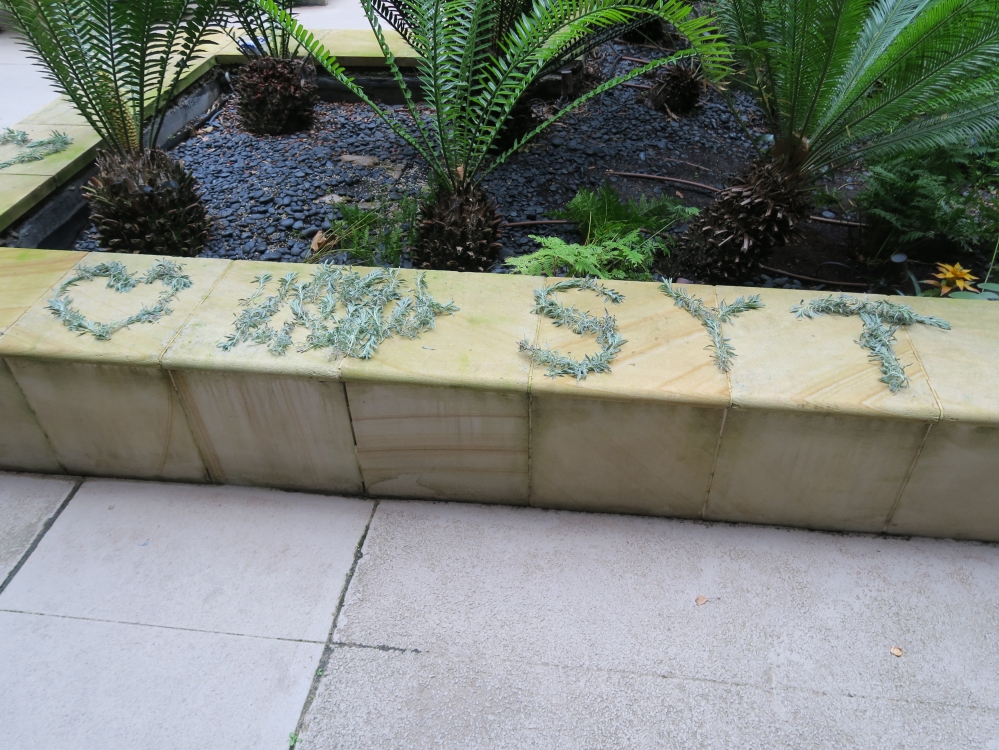
This next and final iteration gave me a chance to think more about arranging the loose parts as invitation, a bunch of lavender leaves and branches that make no shape of their own, alongside a heart symbol and the initials of our building 'SYT'.
Reflection:
On reflection, while there was a large number, the kinds of loose parts was limited and so this limited the possiblity for discovery (Nicholson, 1971). The lack of community participation perhaps is a reflection of the design of the game, something that merits further research and playing to understand how design can invite players in. Perhaps the many interactions sparked by this work - swapping photos with neighbours, text messages and overheard chats - is encouragement enough to play again another day.
The scent of the branches, the physical realm in which this work is placed and my personal connection to the outcome of my own play, all formed an energising and joyful experience. I've gained an understanding of loose parts through the act of play (Henricks, 2014) and this is a prompt to think how my current work visualising educational data in the virtual classroom (canvas data) might use the data elements as loose parts for a collaborative work that generates its own data.
References:
Nicholson, S, 1971, How Not to Cheat Children: The Theory of Loose Parts. Landscape Architecture 62: 30-34
Sutton-Smith, B 1997, The ambiguity of play, Cambridge, Mass. ; London
Ward, K 2018, 'What's in a dream? : Natural elements, risk and loose parts in children's dream playspace drawings', Australasian journal of early childhood, vol. 43, no. 1, pp. 34-42.
